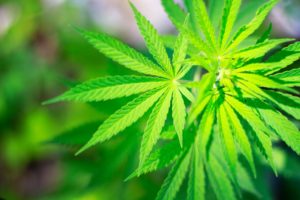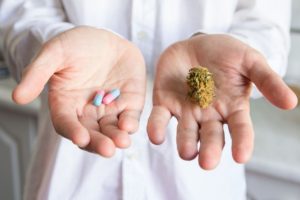 Michael Parker* asked his doctor to prescribe medical marijuana for his back pain. At first, he smoked only a couple times a week and sold the extra to friends. With each passing month, his drug use escalated and soon he was smoking several times a day. The 19-year-old eventually dropped out of college and was involved in multiple car crashes. After nearly two years of denial, Michael finally admitted he was an addict, and with the help of his family, sought treatment.
Michael Parker* asked his doctor to prescribe medical marijuana for his back pain. At first, he smoked only a couple times a week and sold the extra to friends. With each passing month, his drug use escalated and soon he was smoking several times a day. The 19-year-old eventually dropped out of college and was involved in multiple car crashes. After nearly two years of denial, Michael finally admitted he was an addict, and with the help of his family, sought treatment.
Thirty or forty years ago, stories like Michael’s were rare. However, today marijuana abuse has become the No. 1 cause of adolescents being admitted into addiction treatment centers, according to Dr. Scott Teitelbaum, clinical chief of the Addiction Medicine Division at the University of Florida and author of “Weed: Family Guide to Marijuana Myths and Facts.”
Today’s marijuana is much more potent than that found in the Woodstock era, explains Teitelbaum. The main psychoactive ingredient in marijuana is THC, short for delta-9-tetrahydrocannabinol. Most marijuana grown today has 10 to 13 percent THC, compared to only 1 to 4 percent a few decades ago.
 “When you increase the potency of a drug, you increase the potential for addiction liability, but you also increase the toxicity,” explains Teitelbaum. “A more potent marijuana drug is going to be associated with more emergency room visits and psychiatric problems.
“When you increase the potency of a drug, you increase the potential for addiction liability, but you also increase the toxicity,” explains Teitelbaum. “A more potent marijuana drug is going to be associated with more emergency room visits and psychiatric problems.
Over the last five years, marijuana use among teens has been on the upswing. The 2011 Monitoring the Future study shows a significant increase in the daily use for 10th and 12th graders. The study, sponsored by the National Institute of Drug Abuse (NIDA), estimates that about one in 15 high school seniors is a heavy user, smoking on a daily or near-daily basis.
Not surprisingly, as marijuana use has increased nationwide, fewer teens perceive marijuana as being harmful. The study suggests that this may be related to the public discussions of medical marijuana and its legalization in a number of states.
“If you’re talking about medical marijuana, and you’re talking about legalizing it, the perception in the younger kids is, how bad can it be? It’s a medicine, and now they’re talking about making it legal,” says Teitelbaum.
A common myth is that marijuana is less dangerous than alcohol. “The misunderstanding stems from the fact that there is no reported overdose deaths from marijuana,” explains Teitelbaum, whereas you can die from consuming too much alcohol. He says the idea that marijuana is safer than alcohol is like saying breast cancer is better than ovarian cancer. Although they pose different risks, both can be dangerous to your health.
While it’s true that marijuana won’t kill you, the decisions you make under the influence can. Marijuana is the most common cause of drug-related traffic fatalities, according to NIDA neuroscientist Ruben Baler. “You shouldn’t smoke marijuana and drive because your coordination and cognitive ability are heavily impaired.”
Short-term effects of marijuana include memory loss, slowed reaction time, anxiety, depression and paranoia. Unlike alcohol, marijuana is fat soluble, so its effects can linger long after the high wears off, making users unaware of their impairment.
Many of the harmful effects of marijuana are overlooked because they become worse over time. Regular use is associated with early onset of psychotic disorders, learning and motivational problems and addiction. About 10 percent of users will become addicted. With daily use, the risk goes up to nearly 17 percent.
“There is definitely an association between early heavy use and lower IQ ratings,” says Baler. “If a kid is smoking marijuana once or twice a day or even three times a week, his ability to learn and to retain information is impaired.”
In terms of memory and learning, regular marijuana use can reduce performance levels by 10 to 20 percent, explains Baler. “People who use marijuana self-report lower levels of (academic) achievement, lower levels of economic achievement, socioeconomic status and satisfaction with life. People may not realize that the effects of marijuana are so bad because they are cumulative.”
* Name has been changed to protect individual’s privacy.